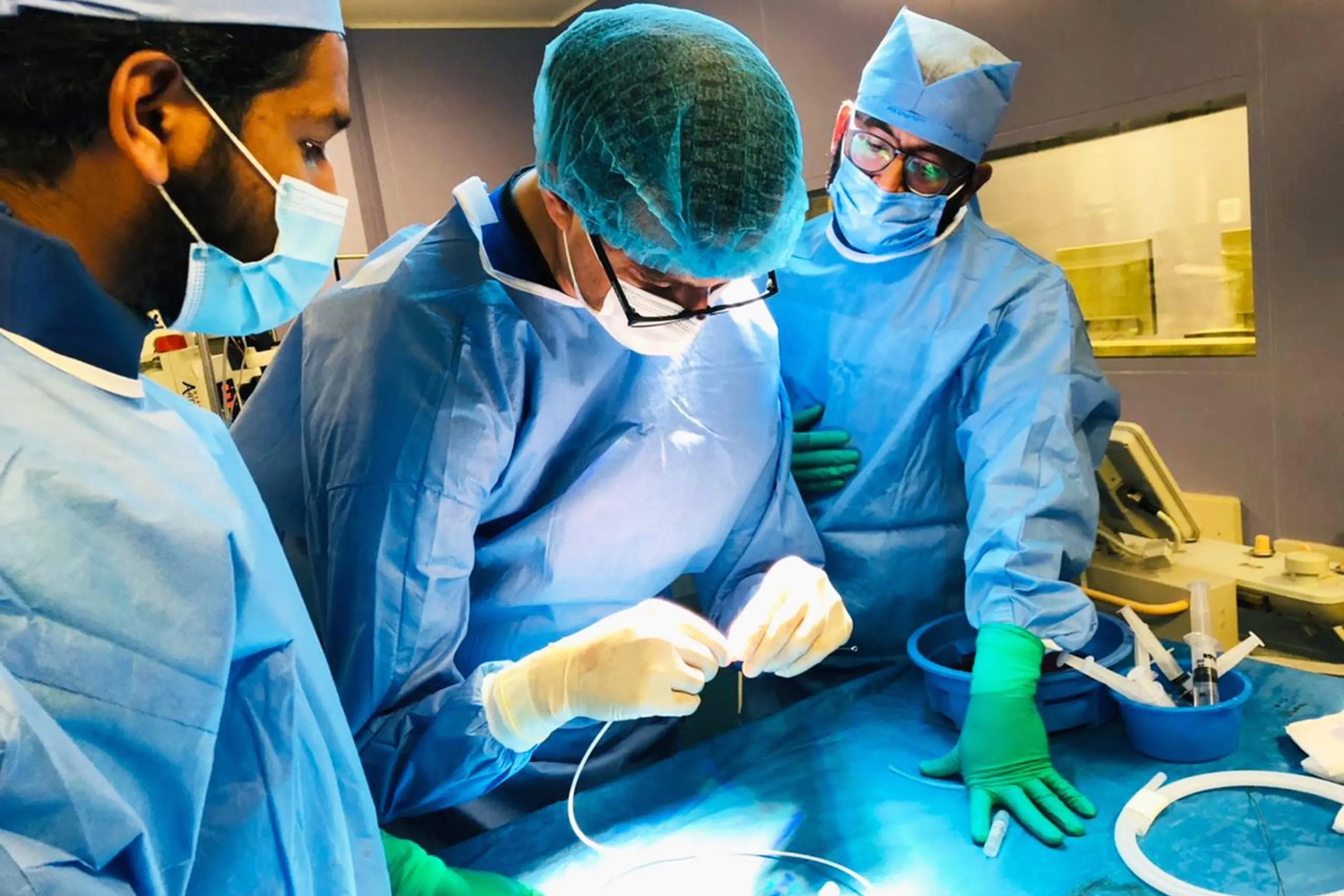PHOTO
Saudi Arabia’s National Transformation Program — an aspect of Vision 2030, implementing the necessary infrastructure to improve economic enablers and raise the standard of living — places emphasis on digital healthcare solutions while increasing the number of licensed medical facilities, with a focus on preventative and therapeutic healthcare.
One establishment leading the process of digitization is the Dutch conglomerate Philips. Perhaps better known for light bulbs and electrical fittings, Philips is also a major player in advanced healthcare equipment. Indeed, through the COVID-19 pandemic, respirators supplied by Philips saved the lives of many Saudi citizens and residents.
Mohammed Sindi, CEO of Philips Healthcare Saudi Arabia, told Arab News that Saudi’s healthcare outlook is positive — hopefully marking a shift from the previous few decades, when chronic diseases such as diabetes, cancer and cardiac issues became endemic.
Royal Philips, the company's communications department, found in a recent report that the majority of healthcare leaders in Saudi Arabia expect about a quarter of routine care appointments in the Kingdom to be shifted beyond hospital walls within three years, according to the findings of a report.
The 2021 Philips Future Health Index — a survey covering 15 countries including the US, Germany, South Africa, Japan, China and Saudi Arabia — found that 99 percent of the healthcare leaders in the Kingdom are largely optimistic in the country’s healthcare system and 86 percent feel confident in the ability of their hospital or healthcare facility to deliver quality care three years from now.
Sindi said: “Healthcare leaders in the Kingdom are confident about the future. Before the pandemic, digitalization and AI were something ‘good to have’ — but during the pandemic the transition was accelerated, and these solutions became ‘must-have’.”
While healthcare leaders in Saudi Arabia say telehealth is the digital health technology their hospital or healthcare facility is currently investing most heavily in, investments will shift in the next three years, with 98 percent saying they would most like to invest in AI in the future.
“Almost three-quarters (71 percent) say AI technologies like those to predict outcomes or to integrate diagnostics is the digital health technology they would most like to invest in the future,” said the report.
But does digitization necessarily mean an improvement of healthcare? What is wrong with more traditional and proven methodologies?
Sindi states that a major advantage of digital healthcare is enhanced accessibility — that is, the extent to which ordinary people have access to necessary health treatment, along with the availability of specialized health practitioners.
“This challenge became more severe during the pandemic — and it is not limited to certain countries or regions. AI allows healthcare systems to provide a higher level of healthcare to a greater number of patients, especially in remote areas. This reduces both operational costs and mistakes on the part of physicians and medical practice.”
With digitization and AI, a physician located anywhere in the world can manage up to 50 beds from his workstation and can make decisions based on information flowing from bedside equipment (patient monitors, ventilators, infusion/syringe pumps etc.), from radiology labs (CT scans and x-rays), and from what the patient is doing in his or her everyday life (via smart devices). The alternative is to have specialist physicians in every location — an expensive waste of precious resources.
Sindi stresses that AI is unlikely to replace physicians and health practitioners. “It’s about managing more patients, increasing the quality of their care and helping physicians to make the right decisions.”
A key element of the NTP is “patient-centered healthcare” — creating a healthier living environment by providing the tools and knowledge with which patients and populations can avoid contraction of diseases in the first place.
Conversely, AI-based systems allow health practitioners to monitor specific populations as to their health and behavior.
The Future Health Index predicts that more routine care will be delivered in “non-traditional health settings,” i.e., beyond hospital walls. For example, the quick check-up can now be done at home, thus reducing hospital waiting lists while optimizing the use of available resources.
And with so-called “telehealth” allowing health practitioners to remotely monitor individual patients or target groups. So if a patient visits hospital X for an ECG, and later visits hospital Y for another examination, and then falls sick and goes to hospital Z for a diagnosis — the system will send a verified history to the physician. Without that connecting network, the physician cannot see what symptoms and treatments that patient has undergone up to that point.
“Telehealth enables a cardiologist to monitor and see different patients across the kingdom,” Sindi said, “and decide on the spot to move a patient to a facility where there is a specialized physician — all without seeing the patient face-to-face.”
As such, healthcare can reach the patient wherever he or she happens to be, enabling patients to be discharged earlier with ongoing services being provided at home. This relieves hospitals from the pressure of having to accommodate many long-term patients, while improving recovery rates.
In the face of widespread chronic diseases such as diabetes, heart disease and cancer, Saudi Arabia faces a high cost of treatment and is limited in terms of the number of specialist centers and physicians it can provide. The Saudi government is therefore promoting initiatives to motivate the population to do more frequent physical activity and improve their diet.
“With AI-based health management systems, health information can be collected from the population and then processed,” said Sindi, “all using very advanced statistical AI algorithms, with accurate prediction of outcomes.”
A key goal of Vision 2030 is to improve the health and wellbeing of the Saudi population.
This will require a collaborative effort between government ministries, health-tech companies such as Philips, other tech firms, telecom organizations and healthcare providers — all working together to create an entire patient-centric healthcare ecosystem for the Kingdom.
Copyright: Arab News © 2021 All rights reserved. Provided by SyndiGate Media Inc. (Syndigate.info).












